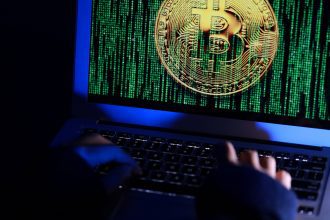A fierce clash over fees, power, and what “true” decentralization really means.
A quick exchange on X between the former SEC chief of staff Amanda Fischer and Uniswap founder Hayden Adams ballooned into a larger dialogue over what decentralization actually means in DeFi. They were responding to a governance proposal and a fee switch, on the surface. But beneath the surface, they were sparring over a more foundational question: Has decentralization been a real philosophy for DeFi projects such as Uniswap, or has it basically been a pretty simple safety net to sidestep regulation? The argument was sparked by Uniswap’s “UNIfication” proposal, proposed only days before the spat. Uniswap Labs and the Uniswap Foundation had proposed merging Uniswap’s operations under a one size fits all structure, turning Uniswap’s long dormant fee switch on, and burning approximately 100 million UNI tokens from the treasury. The plan was to run protocol fees on Uniswap v2 and v3 pools, and to allocate those fees to buying and burning UNI; then retroactively burn tokens that might have been destroyed if the fee switch was switched on from the start.
The plan included shutting Uniswap Labs’ own interface fee that had already earned more than $100 million in revenue, and combining all core functions under one aligned team, rather than divvying them up between Labs and the Foundation. Markets cheered the move, with UNI soaring by about 50% at one point before settling into the mid $7 range, as traders cast the burn mechanism as some sort of on-chain buyback. Critics, by contrast, interpreted the story differently. Amanda Fischer responded that Uniswap’s reorganized structure had underlined how decentralization was never a deeply held value. Fischer, now at advocacy group Better Markets as well as the previous chief of staff to SEC chair Gary Gensler, has long taken a hard line on crypto, claiming that much of the industry can and should be swept under existing securities laws. In her view, Uniswap merging institutions and putting a value accrual mechanism in place for UNI holders showed that decentralization had been used as a “regulatory shield,” using decentralization as a rallying cry to make it more difficult for regulators to identify a one-party entity culpable of certain activities. In her eyes, Uniswap had now become less about a neutral protocol and more about a coordinated business operation with known beneficiaries. Hayden Adams replied sharply. He criticized Fischer and similar policy voices, who he alleged supported a regulatory agenda that would have left Sam Bankman-Fried’s FTX with near-de facto monopoly, while he and other architects were working on open, permissionless alternatives. He connected the discussion to 2022, when Tornado Cash was sanctioned, the Digital Commodities Consumer Protection Act (DCCPA) was being advanced in Washington and SBF was championing his own “Possible Digital Asset Industry Standards.” Those standards encouraged heavy licensing and compliance demands of DeFi front ends and sanctions screening at the interface layer while saying that the underlying code could be permissionless. For many DeFi providers, that package had a regulatory wrap wrapped around it, because most users interact through front ends, not by raw smart contracts. At the similar time, SBF also overwhelmingly backed the DCCPA, which critics said would endow the CFTC with far-reaching authority over digital asset platforms and limit the space for permissionless protocols and in effect lock in advantages for large centralized exchanges.
FTX collapsed in the face of corruption and mismanagement, and the whole regulatory concept lost its credibility. Instead of being the “adult in the room,” FTX became a symbol of how centralized entities can push for rules they like while hiding massive risks. Adams links this history directly to Fischer’s complaint about Uniswap, arguing that supporting SBF’s approach was much more centralizing than what Uniswap is doing now. Here, the Tornado Cash episode also matters. Tornado Cash, a smart contract blockchain that was a non-custodial kind of Ethereum mixer, was sanctioned by the U.S. Treasury’s OFAC via its listing on the SDN this August, making it illegal for U.S. persons to interact with Tornado Cash. This was a first: code itself was treated like a sanctionable entity.
For DeFi builders, the message was that if regulators were prepared to sanction code, then front ends and developers were directly in the line of fire. Later court decisions and policy reviews have challenged the extent to which OFAC can be expanded, and sanctions on Tornado Cash were ultimately removed by early 2025 but the chilling effect was real in 2022. In that climate, it was more sensible for Uniswap to turn off the fee switch. If protocol fees are shifted to holders of tokens, UNI could be seen as a profit-sharing mechanism that invites securities law challenge.
The UNIfication proposal attempts to get beyond that frozen state by openly treating Uniswap less like a protocol than a business-like one: fees enter a burn mechanism, supply becomes more obviously deflationary and governance is tightly anchored in value. Adams describes that maturation a protocol that had survived ugly rule-making pressure is now lining up incentives more directly. The same transition Fischer sees as evidence that decentralization was always partially a tactical legal defense. But is Uniswap truly becoming increasingly less decentralized? As for structure, there is certainly more centralization, there are fewer separate entities, less checks on the organization, and one team properly funded will naturally have disproportionately high levels of power over the roadmap, branding and governance. Big token holders, including early backers and money, retain significant influence. Meanwhile, the protocol is permissionless, the code is widely forked, liquidity resides in many pools and chains, and on-chain governance remains transparent with token-holder voting. In early on-chain conditions, there appears to be strong majority consensus that is in favor of, and opposition to, the UNIfication proposal. That combination captures a perennial DeFi tension: the architecture can be decentralised while the organization surrounding it increasingly resembles a traditional enterprise. The broader point to be made is that decentralization has been a principle and a strategy. Builders wield it to defend open access and censorship resistance, but it doesn’t help enforcement and it makes it more difficult for regulators to blame one culprit. Fischer contends that Uniswap leaned into decentralization when it required legal cover and now walks it back for economic gain. Adams contends that Uniswap remains decentralized when it mattered most the Tornado Cash sanctions, the FTX lobbying period and is now merely aligning operations and incentives the way any mature initiative should. Both have a piece of truth, which is why the argument sounds so loud and clear. So for the builders, the lesson is clear.
Governance design, token economics and organisation structuring have become inextricably tied to regulatory risk. For anyone with a regulatory interest, the thing is to distinguish between genuinely decentralized systems and centralized actors using crypto terms. Uniswap is starting to evolve into a model where the contracts remain open and permissionless as the human layer is more unified together, easy to understand and therefore more exposed. Both users and investors will find themselves in a mess. The core question that still lingers is simple and awkward: Is “good enough” decentralization in this new age shaped by ideals, by legal survival or whatever the market is willing to reward good enough?




















